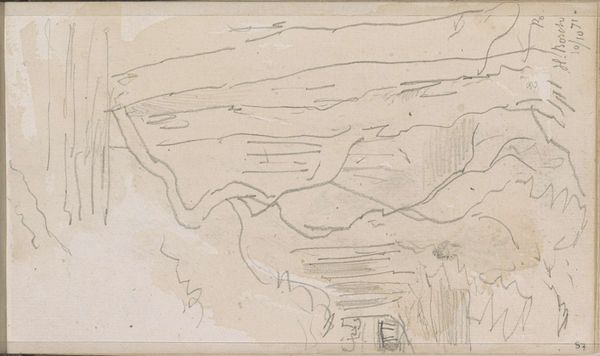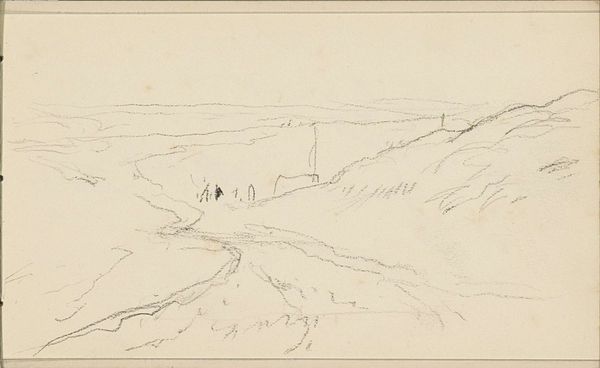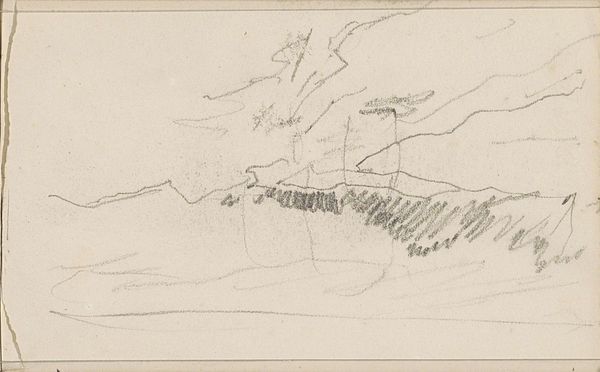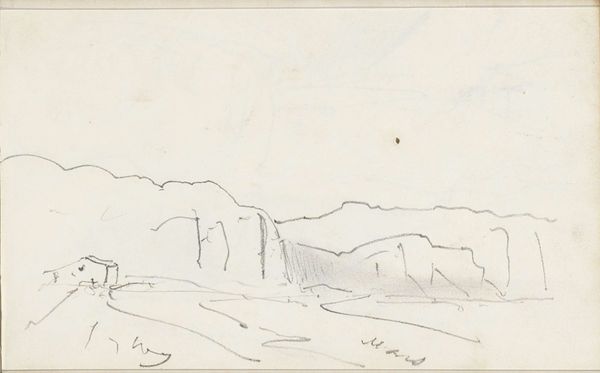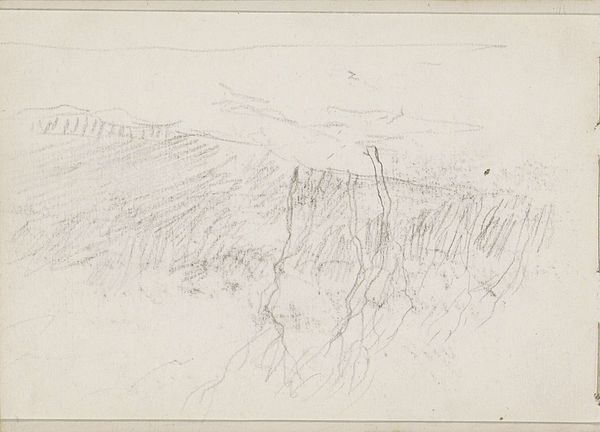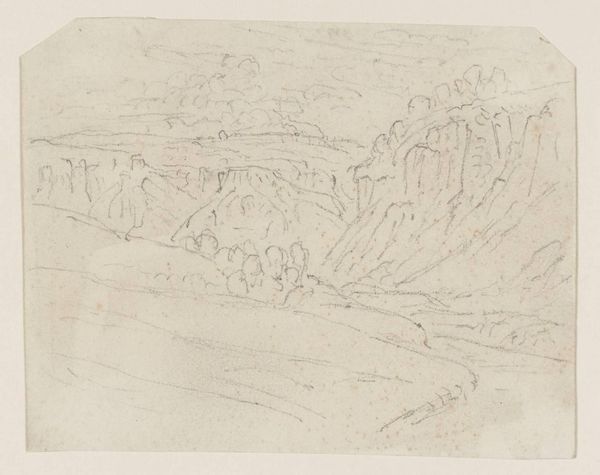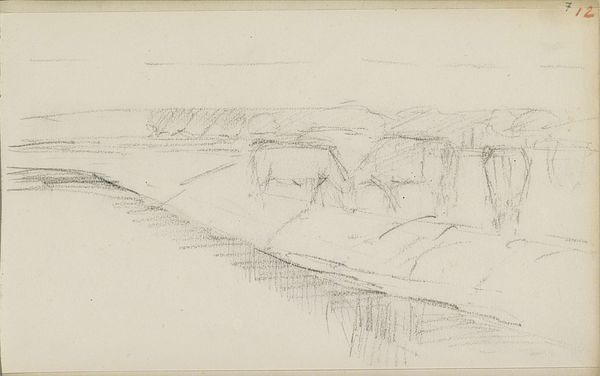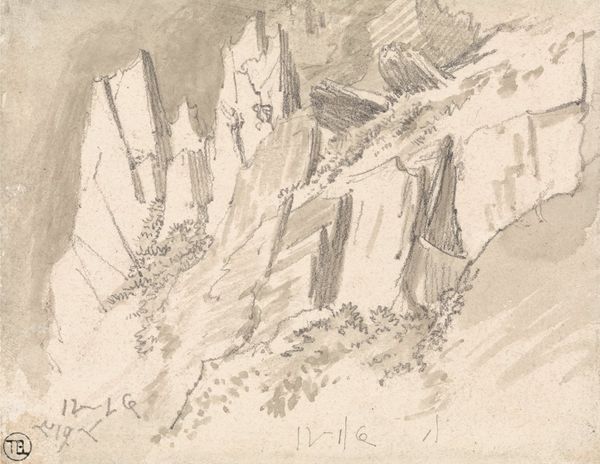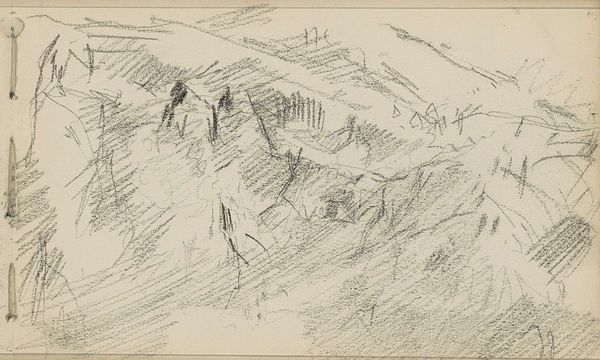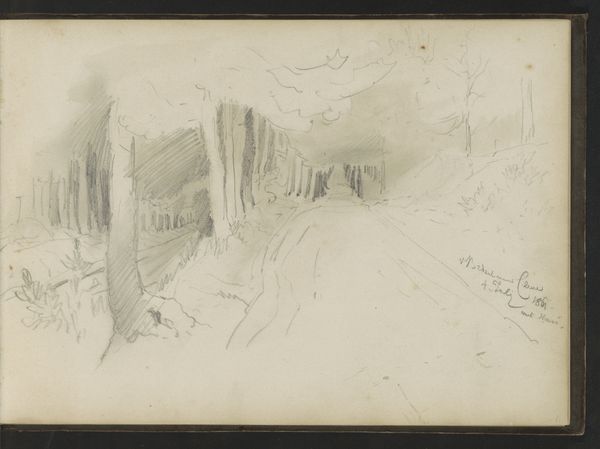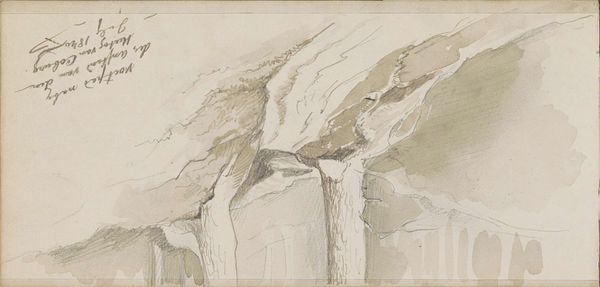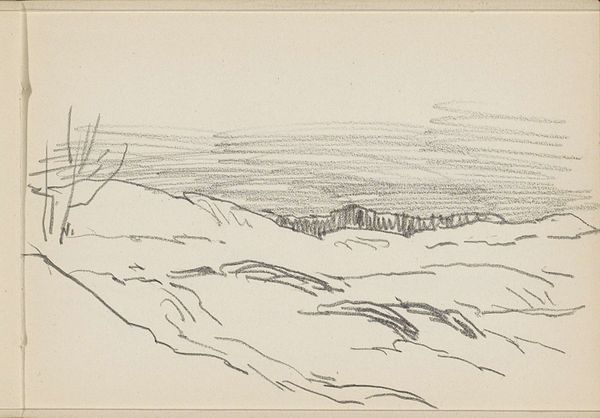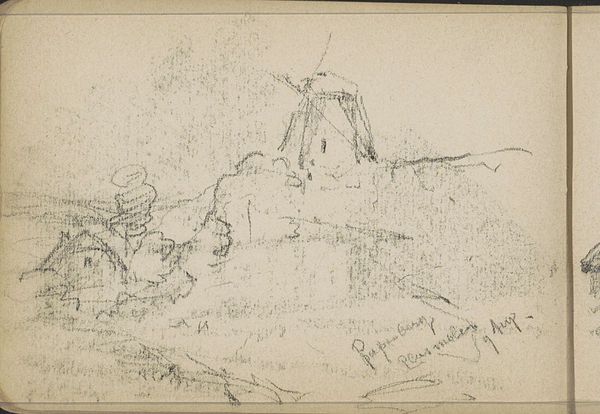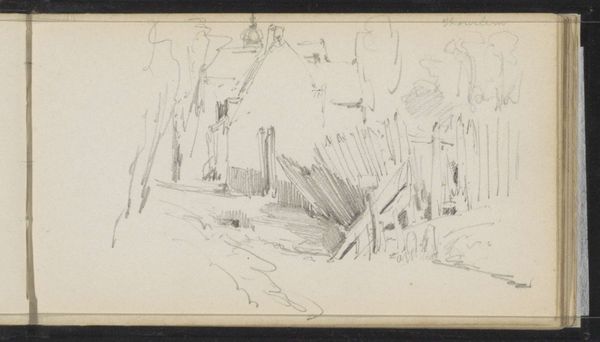
Copyright: Rijks Museum: Open Domain
Curator: We’re looking at "Figuur op een pad in het Haagse Bos," a pencil drawing by Johannes Tavenraat, created in 1871. It resides here at the Rijksmuseum. Editor: Wow, it’s kind of…haunting, right? All those stark tree trunks and a lone figure disappearing into the woods. Feels a little melancholy. Curator: Yes, Tavenraat certainly captures a specific mood. Consider the romanticism at play, the emphasis on nature’s grandeur and humanity's small scale within it. Notice how the verticality of the trees establishes a rigid structure while the soft pencil strokes render a very yielding forest floor. Editor: I see what you mean about the structure; it’s almost architectural. But that little figure? He’s the whole story for me. Where is he going? What’s he thinking? Is it cold? The mind wanders in those woods, doesn't it? Curator: Indeed. That figure offers a point of entry, inviting speculation, yes. I am interested in how Tavenraat uses line weight to suggest depth; note the economy with which the artist has constructed an atmospheric perspective. This exemplifies the period's inclination for detailed landscapes enlivened by intimate, almost genre-painting elements. Editor: Genre elements indeed. You almost miss him there; it also plays with themes of solitude and maybe the sublime. What about the way Tavenraat used the negative space here, especially at the top? All those bare patches of paper feel like a raw invitation. It’s like the drawing’s not quite finished… intentionally, I think. Curator: That very rawness is essential; the piece functions as a preliminary exploration of form and space, encapsulating the Romantic sensibility of imbuing natural forms with emotional content. It reflects broader philosophical and artistic currents, particularly an interest in conveying an immediacy of experience. Editor: It certainly has that effect. It makes you wonder if Tavenraat was actually *there* at that precise moment… feeling the cool damp of the forest and scribbling his way through the bracken. Thanks. I am strangely ready to read some Thoreau. Curator: The emotional connection certainly remains even today. This drawing remains significant as a prime example of late 19th-century Romantic landscape practice.
Comments
No comments
Be the first to comment and join the conversation on the ultimate creative platform.
